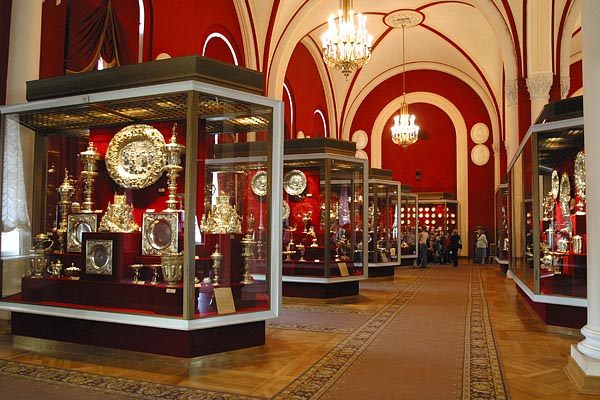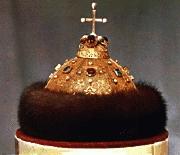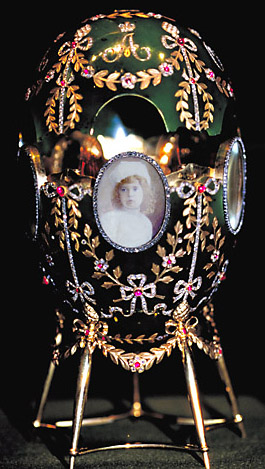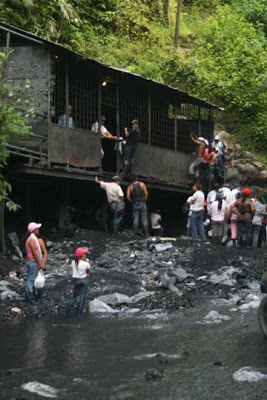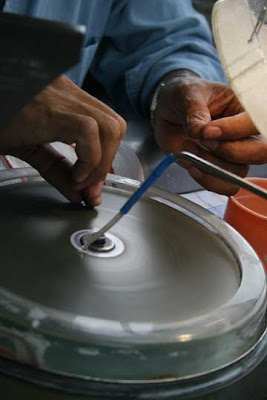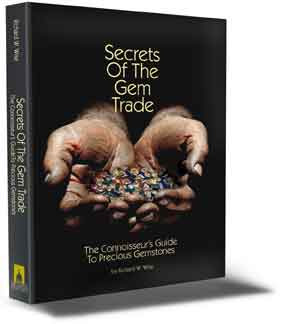by Richard W. Wise
©2010
It is difficult to know where to start. You enter The Diamond Fund through a vault-like door. The room is simple, dark and unadorned. The showcases are brightly lit. Unlike the rest of the Armoury, the room is quiet, only two groups are allowed in at any one time. The first case contains a pile of diamonds. How else to describe it? Included are some beautifully formed bi-pyramidal crystals—several a large as quail’s eggs! I have as yet found no written reference which describes these stones and gives their history, but modern names such as the 342.50 carat “34th Communist Party Congress (actually found in Yakutia) and the 40.54 carat “Soyuz Apollo” suggest that they were sourced in the Siberian fields during the Soviet Era.
In Europe’s Royal Jewel Game; it was all about size:
After visiting the The Armoury, The Diamond Fund, The Hermitage and The Victoria and Albert (not bad for one trip, hey!) I am struck by how much quality standards in gemstones have changed over the centuries. Obviously the stone in these collections were some of the finest in the world, but they are what we today would strongly fault for the quality of their cut as well as for the often substantial number of eye-visible inclusions. It is important to note, however, that the testosterone fueled game as it was played by the royal houses of Europe was more about size than it was about quality. Having the biggest sapphire trumped having a lot of smaller higher quality gems. The point was, “mine is bigger than yours” and if the color was a little off or the cut was wonky, so what!
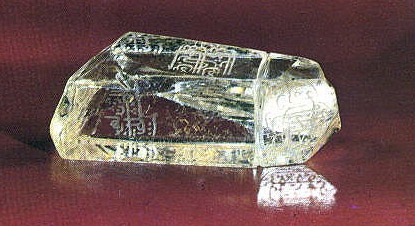
The Shah Diamond, so named because it was owned and signed by no less than three of its first four royal owners
The Shah Diamond–Truly Expensive Graffiti:
The holdings include two historically important stones. The first is the 88.70 carat Shah Diamond, a Golconda stone from the famous Indian deposits. This diamond, hardly more than polished rough, has a history going back to 1544. We know who owned the stone because each of the owners signed it. The first inscription, perhaps the most expensive graffiti on earth, reads: “Burzam-Nizam Shah the second, Year 1000” (1591). Next it was owned by Akbar, the first emperor of the Mogul dynasty of India, and then by his grandson, the gem loving Shah Jehan who added his own inscription in 1644. The final signature reads: “The ruler kajar Fath Ali Shah Sultan” and was carved in 1824. The stone, which appeared to me to be of high color, is described as “light yellowish brown” due to minute cracks in the crystal which contain iron oxide. These cracks are quite invisible to the naked eye. The stone is a natural octahedral crystal with polished faces.
The second diamond is the Orloff. I was particularly keen to have an opportunity to see this great gem in person. This stone was first described by the 17th Century adventurer Jean Baptiste Tavernier which many readers will recall is the protagonist in my newly published historical novel, The French Blue. An expert observer, Tavernier was also a skillful artist; his rendering of this stone was first published in his Six Voyages (1678) and reproduced in the novel. The stone is in the shape of a giant gum drop, faceted up the sides and across the top. Tavernier describes it as being of the finest water. Golconda diamonds are usually type IIa stones, contain no measurable Nitrogen, and do not fluoresce to ultra violet light. Russian experts have noted “a barely noticeable bluish green tinge”, an ill understood phenomenon that is sometimes seen and described in Golconda diamonds such as The Regent, despite their lack of fluorescence. Diamonds of this type are highly crystalline and are often described as “whiter than white” and bring substantial premiums at auction.
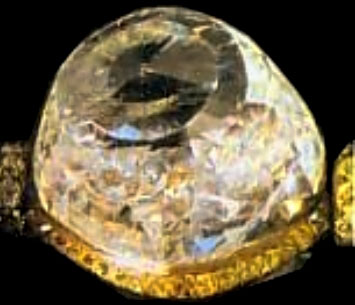
The Orloff, probably the same diamond called The Great Moghul, and described by Jean Baptiste Tavernier in The French Blue.
Another beautiful stone, a tourmaline originally thought to be a ruby and weighing 260.86 carats is set with a green enameled foliate cap. The stone was set in the rough and it resembles the shape and color of a strawberry. It has numerous visible inclusions that add to the fruit like look. It was originally owned by Rudolph II of Bohemia and described by De Boot and called at that time, “Caesar’s Ruby.” It was presented to Catherine the Great in 1777. De Boot valued it at 60,000 ducats.
Update–Siberian Amethyst:
Arrived London on the 21st. Spent a good part of yesterday viewing the famous Victoria & Albert Museum’s jewelry collection. Included is a platinum necklace with a suite of several very large (200 carat plus) amethysts given by Czar Alexander I to Frances Anne, wife of the 3rd Marquess of Londonderry. The suite is of Siberian amethyst. Given the provenance, you would expect these stones to be the finest of their kind. While, fine enough, measuring perhaps 8.4 on a 1-10 scale, they do not stand up to the finest Zambian and Brazilian material and seem to lack the requisite red flash.

